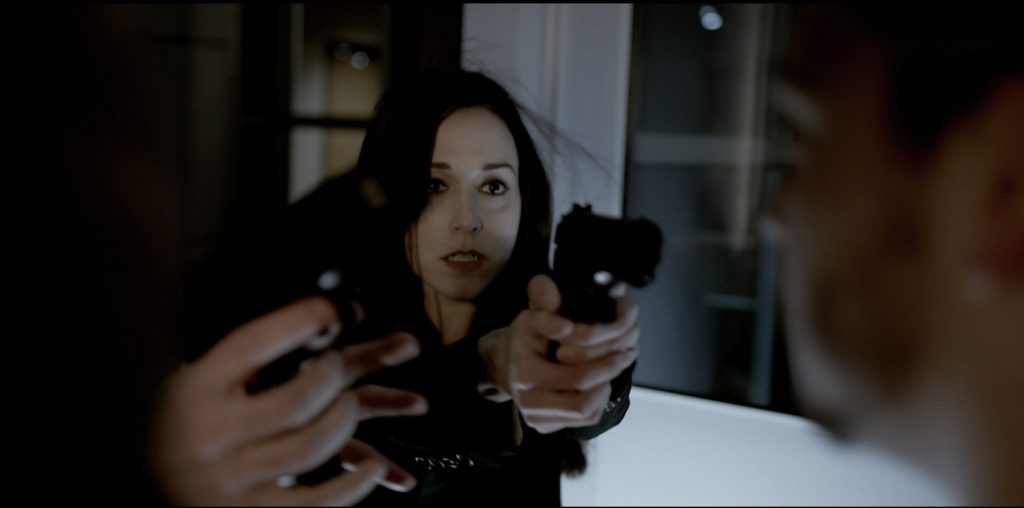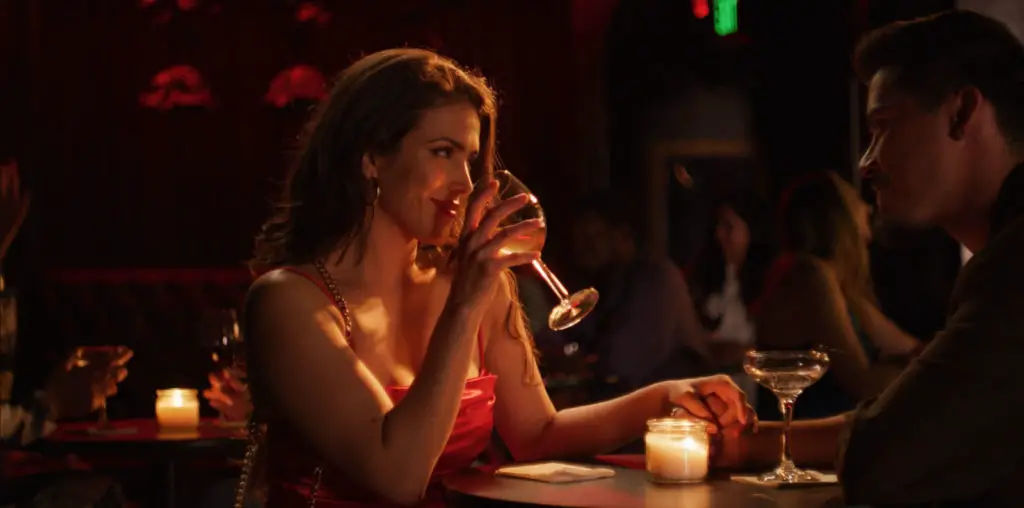
Teen violence has been an unfortunate staple of news headlines in recent years, but unlike the usual case with of-the-moment, hot-button, real-life issues, there haven’t been many films released that deal with the subject. The key word there is “released,” for such films haven’t necessarily not been made. Case in point, Tim Blake Nelson’s much-embattled O, or Vincent Pereira’s “A Better Place,” which after first making the festival rounds in 1997 is now getting a general release on DVD through Synapse Films. While much time has passed since the film started shooting in 1995, its exploration of teen alienation and angst is just as, if not more, timely given certain events that have taken place during the intervening years.
Ironically brought together by their common isolation are Barret (Robert DiPatri) and Ryan (Eion Bailey). Barret is the new kid in town, having moved from California to “a better place” in the East with his mother not long after the sudden death of his father. As is the case with any new student at school, Barret isn’t exactly welcomed by his peers–save Ryan, who comes to his defense on the first day of class. A friendship develops, but it gradually becomes clear that their spirits are less kindred than initially appeared. Unlike Barret, the bitter Ryan is an outcast less by circumstance than by choice, a reflection on the deeper differences in their personalities, fundamental beliefs, and the life experiences that they have had–or, in the emotionally-scarred Ryan’s case, the life experiences he has had to endure.
Relationships–not only Barret and Ryan’s, but also those between them and other students, not to mention that between Ryan and his overbearing aunt (Molly Castelloe)–are in perpetual shift, but what remains constant is the looming threat of violence. The dominant image on “A Better Place”‘s cover art may be that of Ryan brandishing a gun, but the film is more concerned with what’s suggested by the smaller one of Barret looking away in shock–that is, the horror of such outbursts of aggression. The instances of violence in the film are briefly seen but no less brutal or unsettling, even in early scenes such as a locker room fight.
This is not to say, however, that Pereira is simply out to shock the audience; more prominent on his mind is how such terrible events can occur. He wisely sidesteps making any blanket statements or theories about the general social condition, but in the character of Ryan he paints a convincing portrait of how a youth can be pushed to such extreme action. He may be a loner and a bit surly, but he’s no loser nor an outwardly deviant individual; in fact, he is intelligent and very well-spoken, and how logically he justifies his thoughts are perhaps more disturbing than any bloodshed in the film. Bailey, who has gone on to bigger projects since, leads the film’s generally strong set of performances with his electric turn as Ryan, nailing down the character’s creepy charisma.
“A Better Place” isn’t a perfect film; the character of Ryan’s bitchy aunt is thinly written (and a bit too brittlely played by Castelloe), and certain plot points are too obviously telegraphed (for instance, a fairly early and none-too-subtle throwaway line spelling out a way to get a gun). But given the obstacles he and his crew had going into production–namely, the limitations of a miniscule ($40,000) budget and a rushed shooting schedule–that Pereira was able to make a smart and affecting (not to mention beautifully photographed) film about a particularly difficult subject is a measure of his ability as a filmmaker.
However, Pereira is quick (and rather refreshingly at that) to point up any shortcomings he observes on the DVD’s audio commentary track. Being “historian” of Kevin Smith’s (who executive produced) View Askew Productions, Pereira is a veritable veteran when it comes to commentaries, and he makes a smooth transition to the central position, imparting a lot of insight about the difficult production alongside DiPatri and his co-stars Brian Lynch (who also served as associate producer) and Joseph Cassese. Anecdotal bits take a back seat to more technical information about the making of the film, but that doesn’t necessarily mean this is a (to use an occasional criticism of Pereira’s contributions on other DVD commentaries) dry listen. He speaks with enthusiasm and passion about this project, as do the others on track, and their genuine camaraderie comes through.
What also comes through in watching this presentation of “A Better Place” is the amount of work Pereira and various other technicians put in to make this disc the best presentation the feature has ever seen. The image quality is gorgeous, and not just by the standards of a film shot on 16mm stock; with certain unavoidable exceptions (a shot that was botched in camera; some others that recovered from a rough work print), the picture is that clean. More impressive is the remixed 5.1 Dolby sound mix; to get an idea of just how, check out the special feature that allows one to compare the new mix to the original mono track. This feature, while audio-centric, also gives an idea of how dramatic the visual clean-up is; the selection of eight understandably deleted scenes (viewable with optional commentary by Pereira) offers another glimpse of this.
Rounding out the presentation–though it’s likely to be the first thing anyone who buys “A Better Place” will watch–are three separate video introductions to the film by Smith and Scott Mosier (who also executive produced). Featuring Smith’s trademark quick wit and some nice deadpan moments from Mosier as they lavish praise on the film, these segments are all amusing (though it must be said that the first introduction comes dangerously close to wearing out its welcome; the other two are shorter and more effective for it). That said, these bits weren’t really needed, for “A Better Place” makes a convincing case for its merit all on its own.
Specifications: 1.50:1 non-anamorphic widescreen; English 5.1 Surround; English Dolby Surround. (Synapse Films)

